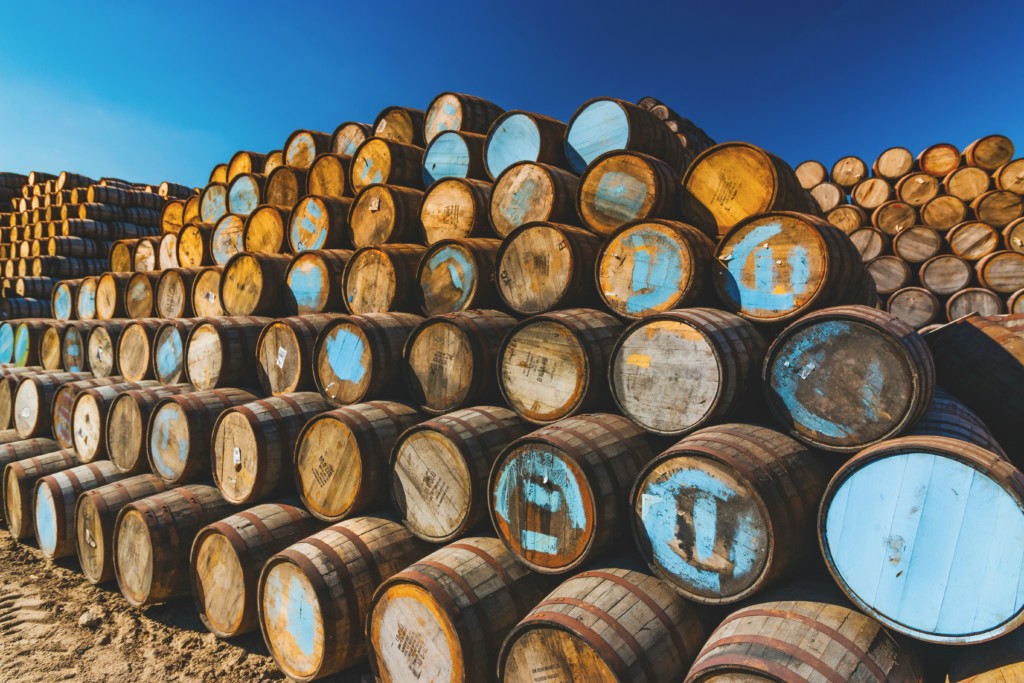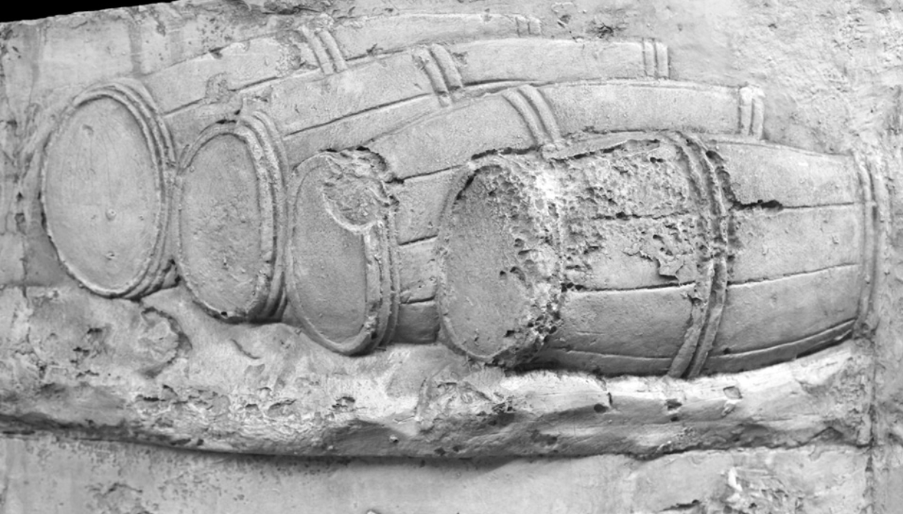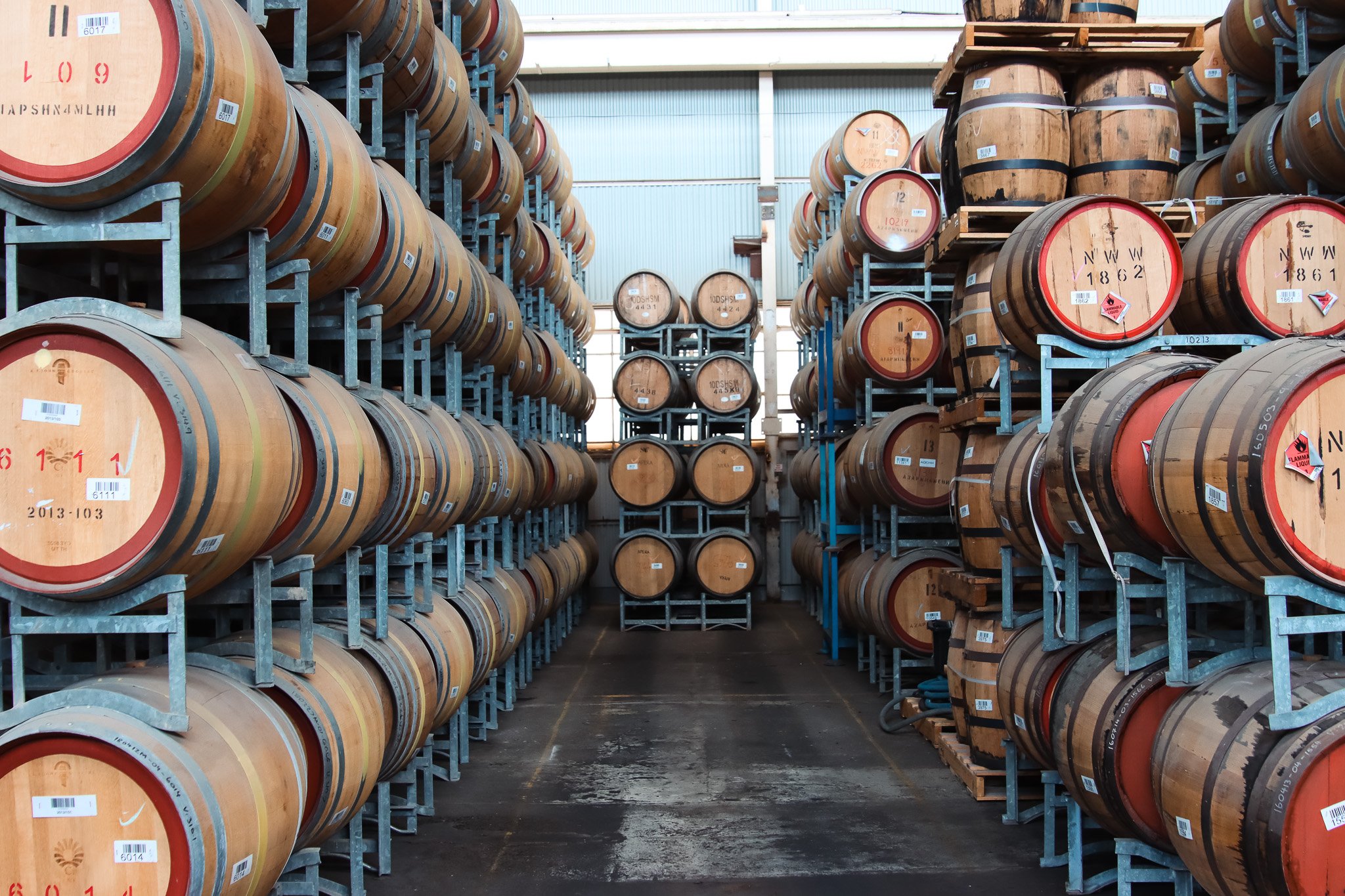February Outturn 2024 Feature Article
Whisky expert and Journalist Chris Middleton continues his Outturn series ‘Mighty Oaken Cask’ in this issue with the second chapter, exploring the origin of whisky casks and the significant influence the Celts had in improving the wooden vessels.
The invention of the cask originates in the ancient forests of northern Europe.
While humans have used natural or carved wooden containers since antiquity, cutting staves and assembling and binding them into wooden containers was a Celtic innovation over two thousand years ago. The skills to construct liquid-tight containers evidenced a sophisticated culture able to fabricate containers from alder, yew, fir and oak, securing the staves with hoops of hazel, ash and willow branches. Three hundred years after the Celts conquered Rome, the Roman Empire began its invasion of Celtic Gaul in 121 BCE and found complex societies skilled in the arts of coopering. Wooden Celtic containers were superior to the Greek-Roman amphora made from fired clay. Small and heavy jars, prone to breakage, usually single usage. Whereas casks were light, durable, and space efficient for transport and storage, easy to handle by rolling, and for beverages like wine, improved the flavour through oxidisation and interactive wood maturation.
Cask is a relatively modern idiom from the French and Spanish casque, anglicised in the early 18th century, meaning conical helmet, referring to a shell or protective container. The term soon became generic in English for tight wooden containers. The early Scots preferred the term barrel, from the Celtic baril. Many terms for different size containers are from Celtic etymology, such as hogshead from Celtic togsaid and the tun, from tonda, originally a Celtic term for an animal skin holding liquid. Tonda, latinised to tunna, became the most popular size for transporting wine, known as the tun. European boats were designed to accommodate the transporting of tuns and, later, variations in capacity to suit transport and storage.
The Anglo-Normans officially set the tun at 252 gallons, becoming the universal definition for shipping tonnage. The tun, hogshead (65 to 52 gallons, varied by country and changing English laws), so too the puncheon (69 gallons), and barrique (36 gallons) became the standard casks for shipping French wines until Iberian wines introduced the gorda (700 gallons), butt and pipe (104 gallons).

The Celtic culture celebrated beer, worshipping the god of the woodlands and beer, Secellos, who ominously carried a mallet and small cask, likely containing beer — technically, ale, as it was not boiled into beer with hops to extend the drinking life of their fermented wort. If Roman historians are any guide, the Celts were prodigious and excessive beer consumers. Celtic word for beer was boir and cerversia. Cerversia lives on today as the scientific name for brewer’s yeast, Saccharomyces cerevisiae, the single-cell budding organism that converts cereal sugars into alcohol. Without ale, the raw material for distilling whisky would not be possible. The Celts venerated the oak forests, revering these noble trees as perq, the etymological root for the Linnean species nomenclature for oak trees, Quercus. Over 600 oak species are endemic to the northern hemisphere, and about two dozen are used for coopering.
Oak is recognised by its country of origin, American, English, French and Spanish oak, or the growing regions of Limousin, Vosges, Ozarks and Appalachia, or ports of export, Memel, Danzig and Quebec oak. Behind these common names are the dominant species. Quercus alba is the standard American white oak in the United States and Canada. In Europe, the leading species are Quercus robur (pedunculate oak) and Quercus petraea (sessile oak). Besides having variations in leaf and acorn stalk length, sessile is less bitter than pedunculate due to fewer tannins and richer triterpenoids, making it slightly sweeter. In Asia, Quercus mongolica and Quercus crispula in Japan is called mizunara.
The major differences between American and European oaks are in the coopering and flavour variances. European oaks can only be split for stave making, and American oak is sawed due to its structure and capillary vessels known as tyloses. These different species have discernible flavour variances, with American oak having much fewer tannins, making it slightly sweeter. Charring further reduces bitter tannin while caramelising more wood sugars, as over 60% of the stave wood is cellulose and hemicellulose sugars, enhancing the sweeter taste.

113 CE: Trajan’s column in Rome commemorating the two Dacian campaigns (101 – 106) in modern day Romania carved events in bas relief depicting large casks.
White oak is higher in lactones, making for a coconut-like flavour, and more aromatic compounds, especially lignin, for a pronounced vanilla-like characteristic when scorched. The extracted oak colour is usually a giveaway to the maturation cask, with ex-bourbon American oak usually showing straw-to-reddish shades compared with European oak, displaying more golden and xanthic hues.
Another oak species not to be neglected is Quercus suber. While the wood is unfit for coopering, its stripped-off bark is the cork stopper sealing most whisky bottles.
The Celts left another legacy. Immigrating to Ireland and western Scotland, Gaelic Celts distilled their ale, in their vernacular tongues, into uisge-beatha or usquebaugh. Both distilled spirits meant aqua vitae — the water of life, anglicised to whisky in the early 18th century.
Written by Chris Middleton. Chris is a long-time Society member and collaborator, regular contributor to Whisky Magazine, and Chairman of Starward Distillery. Keep an eye out for part three of the Mighty Oaken Cask series in future Outturns.
This article is featured in February 2024 Outturn — bottles will be available to purchase on Friday the 2nd of February at midday AEDT exclusively to members of The Scotch Malt Whisky Society. Not a member? Click here to learn more about the world’s most colourful whisky club.








